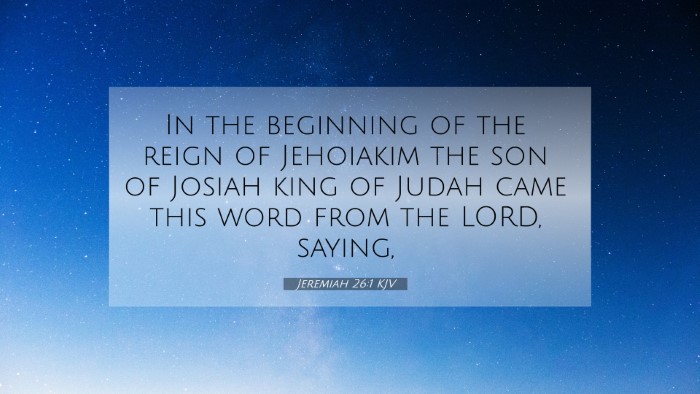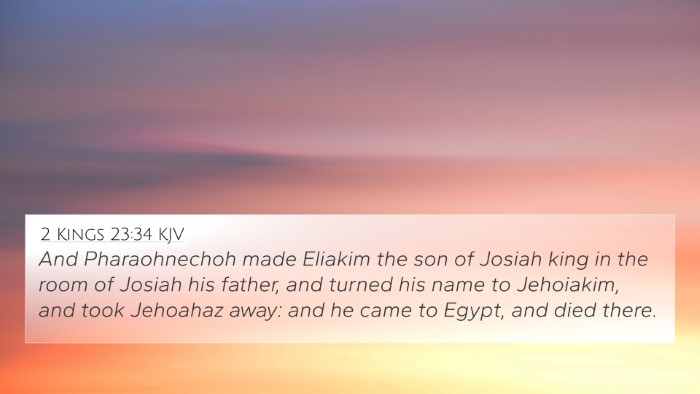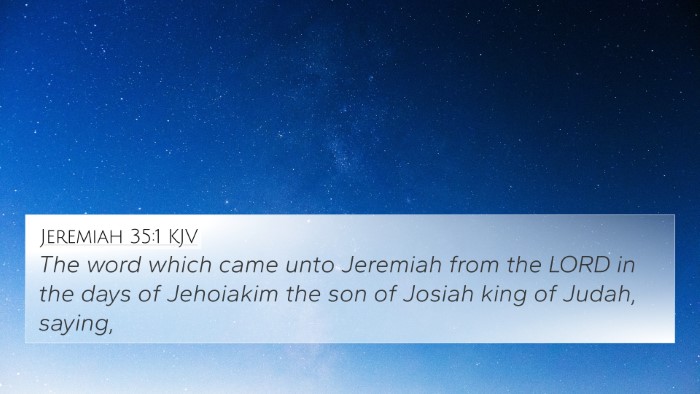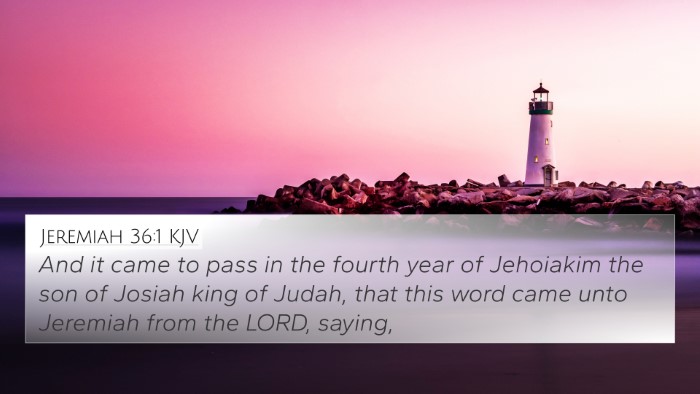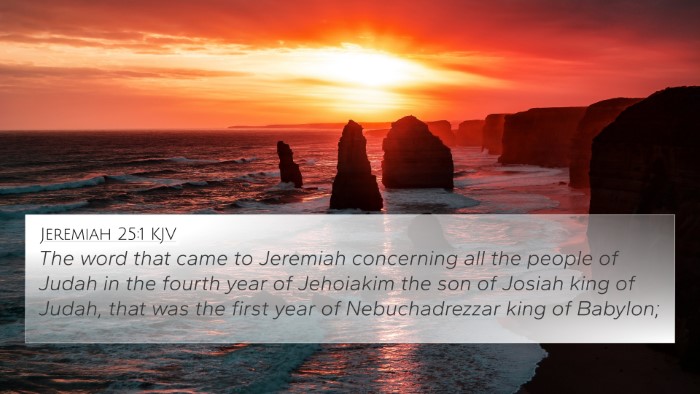Understanding Jeremiah 26:1
Jeremiah 26:1 states, "In the beginning of the reign of Jehoiakim the son of Josiah king of Judah came this word from the Lord, saying." This verse marks a significant moment in the prophetic ministry of Jeremiah, providing insight into the historical context both in terms of leadership and divine communication.
Contextual Overview
In exploring this verse, we recognize the establishment of Jehoiakim's reign and the prophetic message that accompanies it. Understanding this context helps readers to appreciate the gravity of Jeremiah's calling and the circumstances affecting the people of Israel.
Insights from Commentaries
-
Matthew Henry:
Henry draws attention to the significance of the timing of this message. It emphasizes God’s sovereignty over Israel's kings and highlights that even in times of political unrest, God’s word remains a guiding force for His people.
-
Albert Barnes:
Barnes elaborates on the political landscape during Jehoiakim's reign, noting that he was a ruler who often acted contrary to God’s will. The proclamation made to Jeremiah signals a warning not only to the king but also to the nation as a whole about their spiritual state.
-
Adam Clarke:
Clarke identifies the prophetic role of Jeremiah as crucial during this time. He emphasizes that the word "came" signifies a direct communique from God, underscoring the active relationship between God and His messengers as well as His desire to guide His people.
Thematic Connections and Cross-references
Jeremiah 26:1 can be linked to various other scriptures, emphasizing the inter-Biblical dialogue and the thematic elements of prophecy and divine instruction. Below are key cross-references that illustrate these connections:
- 2 Kings 23:34: Discusses the reign of Jehoiakim, providing context about his governance and choices.
- Jeremiah 1:4-10: Chronicles Jeremiah's call and sets the stage for his prophetic mission, highlighting God’s appointing of him to be a prophet to the nations.
- Ezekiel 2:3-5: Shares a similar calling experience, emphasizing God’s purpose for prophetic voices amidst disobedient nations.
- Isaiah 1:1: Similar structure to Jeremiah's call, indicating a pattern of prophetic revelations during significant historical moments.
- Daniel 1:1-2: Establishes the timeframe of events in Judah and God's sovereign plan even in exilic contexts.
- Acts 7:52: Connects the theme of rejection of prophetic voices, reflecting the historical continuity of disobedience.
- John 10:27: Highlights the relationship between God and His followers, where His voice is recognized by those who belong to Him, reminiscent of Jeremiah’s role.
Analyzing the Message
The message delivered at the commencement of Jehoiakim's reign is one of warning and strife. Jeremiah's task includes calling the nation back to compliance with divine law. This becomes even more pertinent when one considers the broader context of Israel's history with God.
Comparative Analysis
By exploring these verses in tandem, we can see threads of disobedience, divine warning, and the call to repentance that are interwoven through the narrative of Israel. Jeremiah's message serves not only his immediate audience but provides profound lessons for future generations concerning the consequences of turning away from God.
Tools for Deeper Study
For those studying Jeremiah 26:1 and its implications, various tools are invaluable:
- Bible Concordance: To find related verses and themes.
- Bible Cross-Reference Guide: Helps identify connections between the verse and other scriptures.
- Cross-Reference Bible Study: Techniques to systematically uncover biblical themes regarding warnings and prophetic messages.
- Bible Reference Resources: To delve deeper into the historical context of the era.
Conclusion
Jeremiah 26:1 is a focal point in understanding the role of prophecy as a divine communication tool during a turbulent period in Israel's history. It offers profound insights into God's persistent call to His people for repentance and faithfulness. As readers delve into the interconnections with other scriptures, they compile a robust theological framework that illustrates the significance of this account in the grand narrative of the Bible. By employing various study tools and reflecting on cross-referenced themes, we can grasp the overarching message God has for His followers, both ancient and modern.


